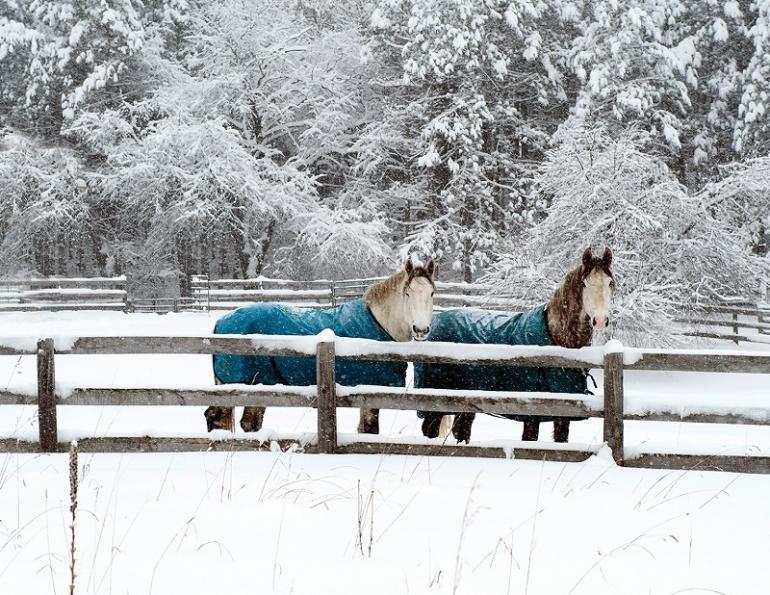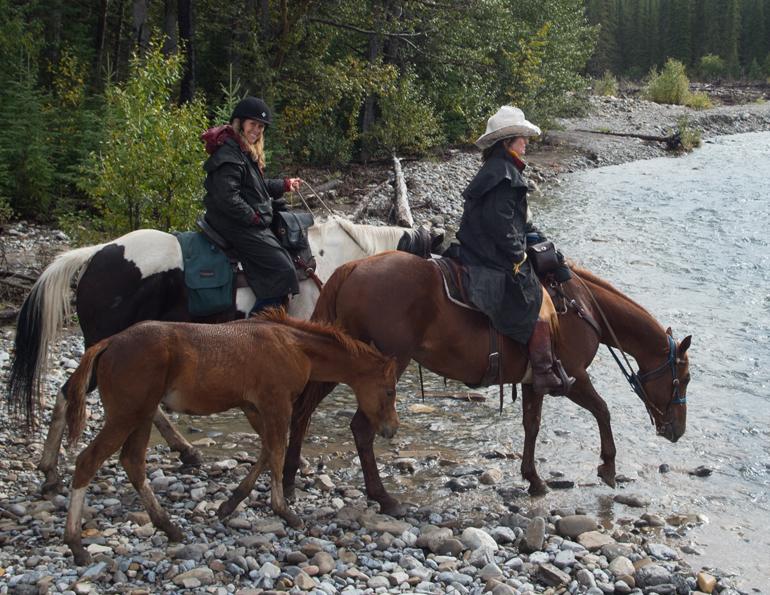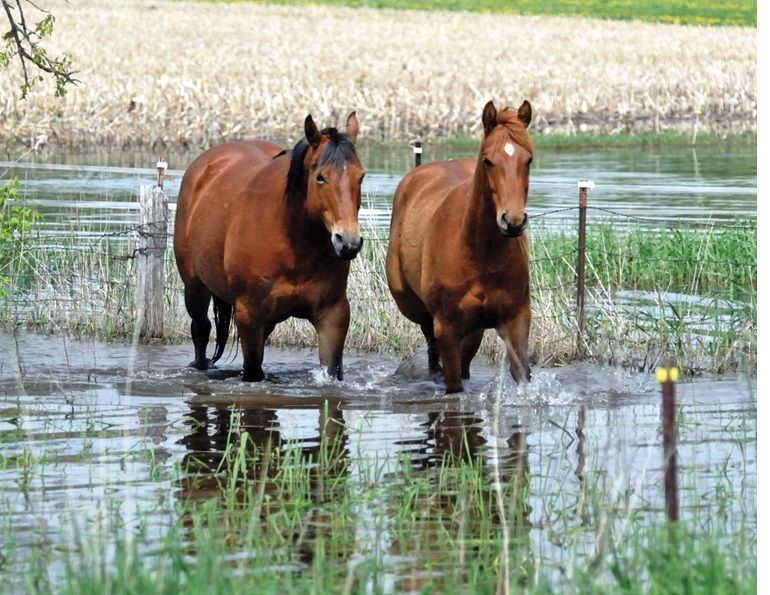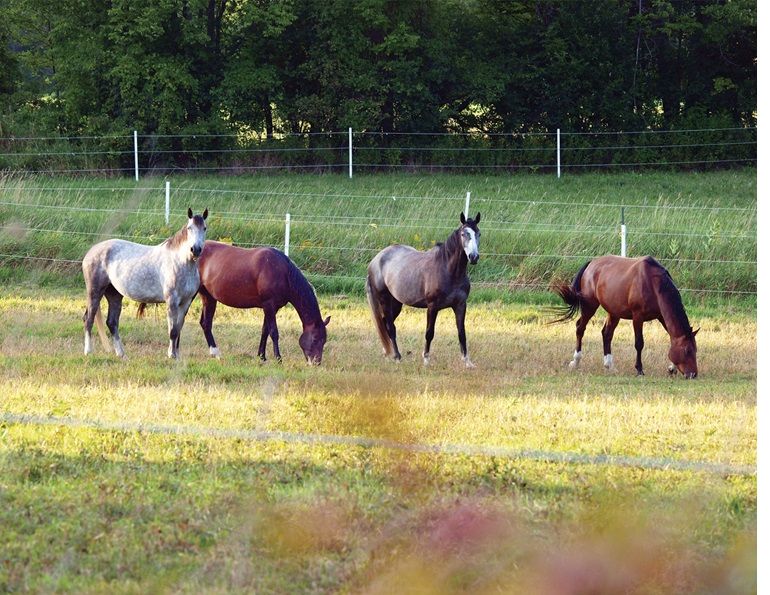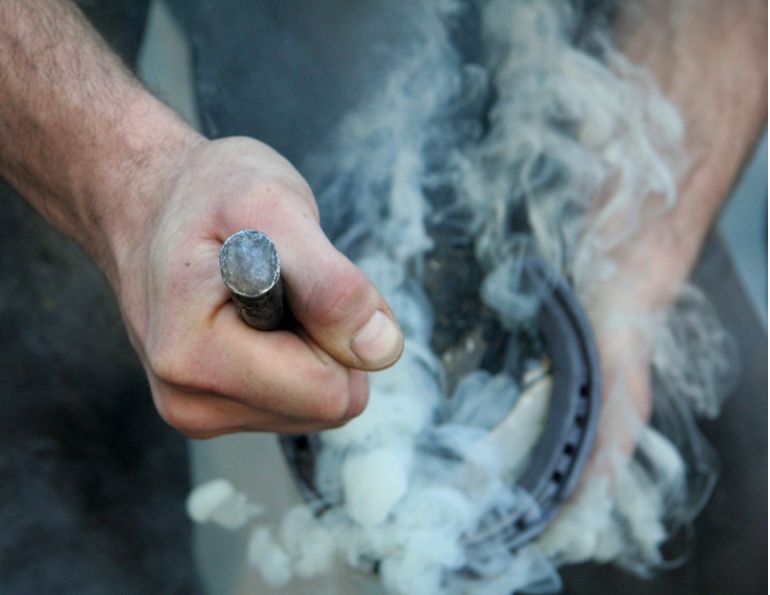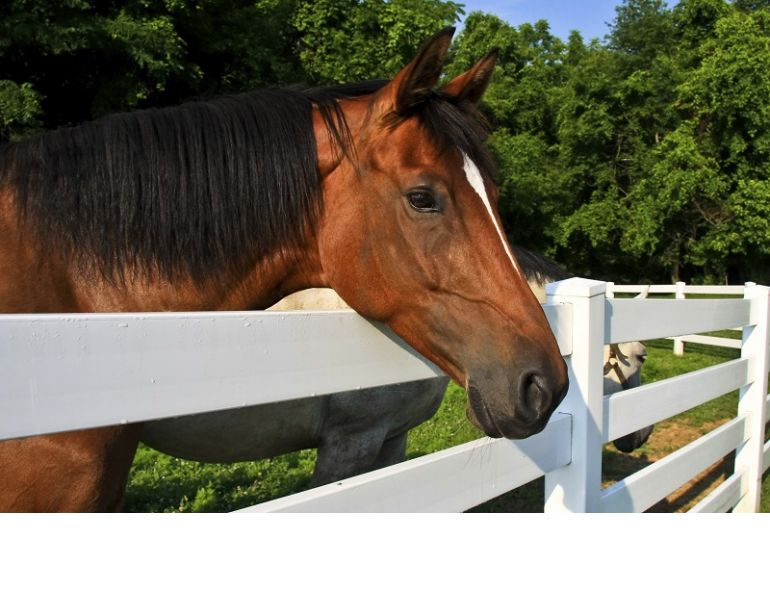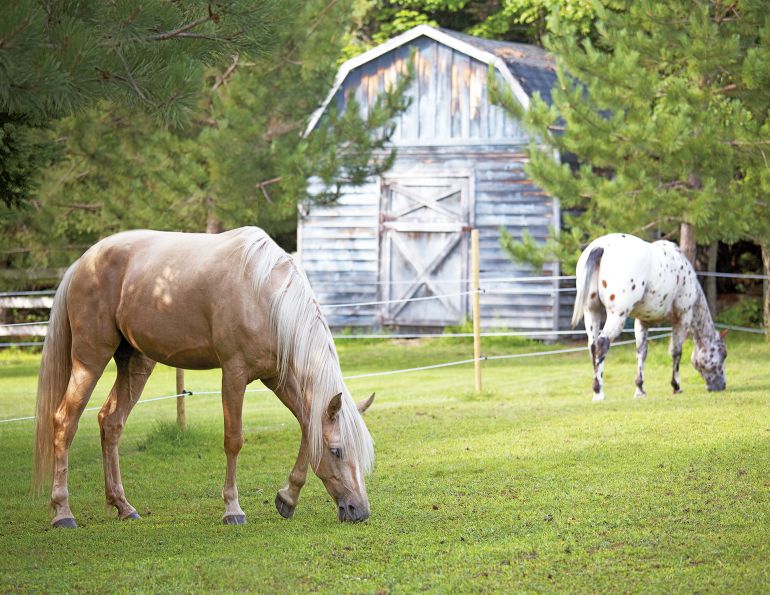By Equine Guelph/System Fencing
The cold weather is slowly sneaking up on us. Guaranteeing your fences are prepared for this year’s winter will save you a significant amount of time, stress, and money.
No matter what type of fence you have, there are several protective and preventative measures you can take to ensure your fence is in prime condition for the upcoming Canadian winter.
Firstly, all fence lines should be cleared of overhanging branches, trees, and vines as they add extra weight on the rails and can even sometimes short out electric fences.
Also, clearing behind the fences will help to prevent inconvenient maintenance after an ice storm or heavy snow fall.
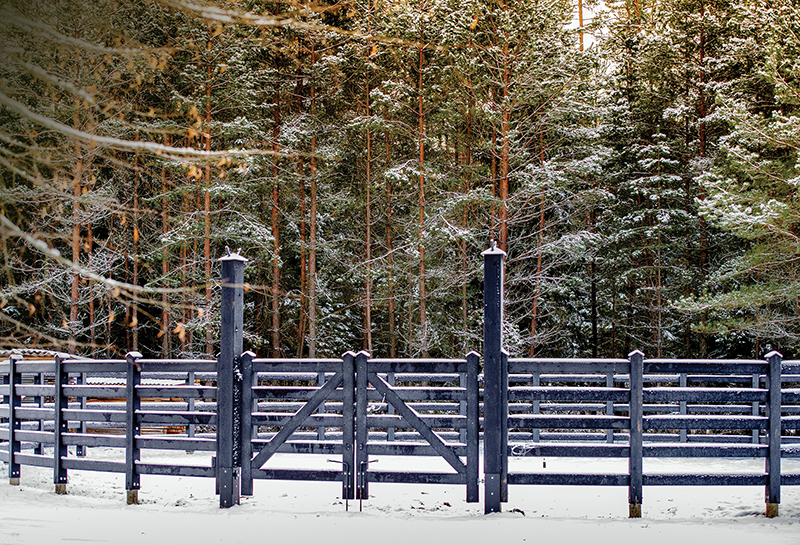
Gates should be secure, not sag, and be approximately 12 inches off the ground so they do not become stuck in snow and ice. Photo: Shutterstock/Undise
Flex Fencing
Flex fencing is a type of fencing that is constantly under tension. This 24/7 tension is taken up by the corner and the end posts, making the fencing look and feel tight. When getting this type of fence ready for winter, you need to check the brackets to make sure all screws or nails are secure. The end and corner posts also need to be inspected to make sure they will hold the appropriate tension throughout the winter. It is very important that you do not overtighten Flex fencing in the fall as the cold weather makes the fencing contract. Too much tension will create more stress on the end and corner posts and could result in further damages. Flex fencing only needs to be tightened enough so that the rails do not sag.
Related: Let's Talk Mud
Electric Fencing
Like humans, horses will avoid touching anything that gives them a shock, therefore electric fencing acts as a psychological barrier to them. In order to be effective, electric fencing needs to have at least 5000 volts on a fence tester. However, the biggest issue with this type of fencing in the winter is making sure that the lines are tight and not shorting out at any points. If you hear a snapping sound or see a flash of light coming from the fence, you have a short. Grounding issues occur if you have low voltage or amperage on your fencing. Electric fencing only works when the grounding is completed properly. The best option is to have at least three electric fence wires with two being “hot” and one wired back to the ground rods.
Wire Fencing
Wire fencing requires the least amount of preparation and is very maintenance free. Check to make sure the posts with wire are not missing any staples as well as guaranteeing the wire is not broken. Also check for broken posts, and confirm the tension on the ends and corners is secure.
Board Fencing
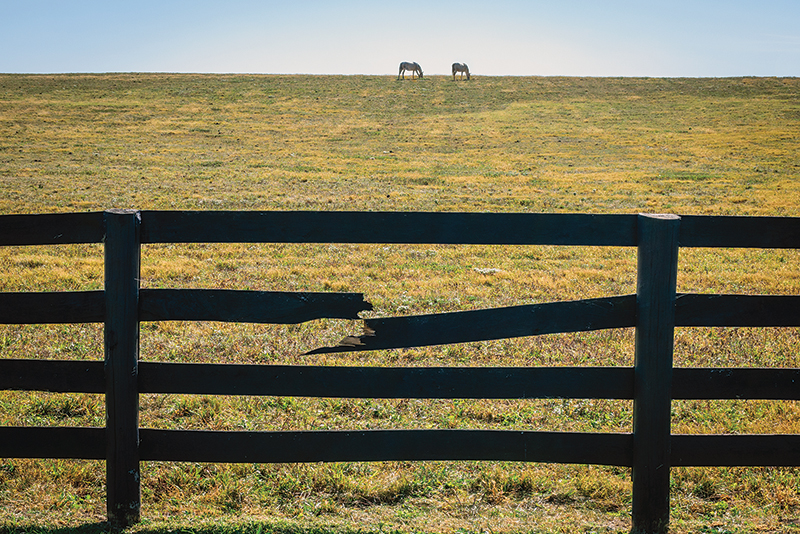
Autumn is the perfect time to walk your fence line and clear it of overhanging branches and trees that will add extra weight when snow arrives, as well as make any necessary repairs while the good weather holds. Photo: Shutterstock/Thomas Kelley
Fence rails and posts need to be checked on both sides of the fence lines before the winter season. Work down the fence lines inspecting all spots where the rails are nailed or screwed into the posts, making sure that nothing is sticking out (nails, screws, or parts of the boards). Push on every post to make sure they are strong and secure. If the post moves more than six inches in either direction then you may have a broken post that should be replaced before winter.
Gates
Gates may be the most important part of fencing requiring maintenance. A gate that is sagging or not secure will easily become trapped in ice and snow causing great inconvenience for you when bringing your horses in and out of the paddock. Ideally, gates should be 12 inches off the ground. Having an easy quick latch on the gate will also ensure simple opening with gloves or mittens. Finally, the hinges should be tight and straight.
Working with your fence line in the nice fall weather will save you a lot of hassle when the thermometer reads minus 30 degrees C. The cold and snow will be here before we know it and preparing your farm ahead of time for the harsh Canadian winter will leave you with peace of mind, knowing that your animals are secure.
Related: How to Diagnose, Treat & Prevent Rain Rot in Horses
Related: Planning Your Horse's Run-In Shed
Published with the kind permission of Equine Guelph.
Photo: iStock/Ballycroy



